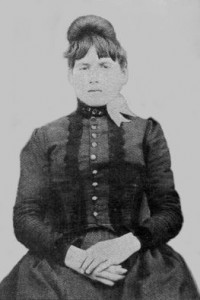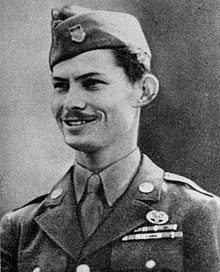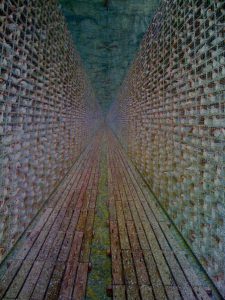Greenbrier County, West Virginia was a densely populated area. Nothing out of the ordinary ever occurred there until 1897, when a shocking death created an outburst and made headlines. Elva Zona Heaster was victim to a horrible murder that had originally been judged as “death by natural causes.”1
In 1895, Heaster gave birth to an illegitimate child. The next year she met Erasmus Stribbling Shue, and the couple soon married and were known to be inseparable. Despite the love the couple had for one another, Mary Jane Robinson Heaster, Zona Heaster’s mother, was not very impressed by Erasmus Shue, and disapproved of their marriage. Despite this, the couple continued to live together.

Erasmus Shue had initially moved to Greenbrier County to work as a blacksmith. Months went by and the couple seemed to live a normal life. On January 23, 1897, Shue sent a young boy that worked with him in the blacksmith shop to run an errand for him. The young boy obliged and walked to the couple’s house to do as he was told. Upon entering the house, the boy found Heaster lying at the bottom of a stairwell. Knowing that Heaster was dead, the young boy ran to his mother and notified her of what he had seen. The local doctor, police, and Shue were notified. Shue was the first to arrive on the scene; he carried his wife up the stairs and laid her on their bed, where he proceeded to dress her. His actions were very out of the ordinary considering the custom was for the ladies of the community to dress her in appropriate burial wear. Shue dressed her in a stiff-collared dress and a large veil. The local doctor, Dr. Knapp, was sent to examine the body, but was having difficulties since Heaster’s husband refused to let go of her, cradling her head and hysterically crying. As a result, Dr. Knapp declared her cause of death to be “an everlasting faint,” but then changed his statement to “childbirth.” What was particularly interesting was that Heaster had told no one that she was pregnant, nor did she appear to have signs or symptoms of pregnancy. Soon after, Heaster’s mother was notified and she immediately blamed Shue for Zona’s death.2
Mary Jane, Heaster’s mother, began praying and asking God to give her the name of the person guilty of her daughter’s murder. About four weeks after the death of her daughter, Mary Jane claimed to have had visions of a ghostly appearance telling her that Shue had killed her daughter. This occurrence happened four nights in a row, and began to make Mary Jane very ill. She decided to take her testimony to a prosecutor, John Alfred Preston. The prosecutor was hesitant about taking her case, but decided to do research on his own before believing Mary Jane. He went around the town asking for testimonies on the matter and found that Dr. Knapp admitted to not having been able to conduct a complete examination of the body. Neighbors noticed that during the viewing of Heaster, Shue never left the side of the coffin and didn’t let anyone look at her closely. As the pieces of the mysterious death finally fell into place, the prosecutor decided to take on the case. The prosecutor was able to obtain a warrant that allowed the body to be exhumed for re-examination.3
After a complete autopsy was performed, doctors found that Heaster’s neck had been broken and the bruising around her neck indicated that her windpipe had been severely crushed, as if she had been strangled. After the autopsy had been concluded, Shue was arrested and taken into custody for a later trial.4
The trial started on June 23, 1897, and lasted for eight days before the jury decided on a verdict. During the trial, the prosecutor tried to avoid using Mary Jane’s testimony due to the misunderstanding the jury might have. Regardless of these allegations, Mary Jane went ahead and revealed how she knew that Shue had murdered her daughter. Shue’s attorney immediately rejected the idea claiming that Mary Jane was crazy and unstable. The jury, however, found her story credible but did not mention it again after the first statement. The evidence against Shue was overwhelming and on the last day of the trial the jurors finally decided on a verdict. Ten of the twelve jurors voted on execution, but since it was not a unanimous decision, Shue was eventually sentenced to life in prison for first degree murder of Elva Zona Heaster.5
After the sentence, Shue was sent to prison, but the overwhelming disagreement on behalf of the community caused an outraged. Greenbrier County citizens felt that Shue should be hanged for his crime. On July 11, 1897, an angry mob gathered and threatened to lynch Shue, but the sheriff heard what was happening, and hid Shue in the woods before the mob could reach him. The Sheriff calmed the mob and eventually everyone went home.6
On July 13, 1897, Shue was placed in the state penitentiary where he eventually died of natural causes on March 13, 1900.7
The ordeal of the Greenbrier Ghost has sparked interest in many paranormal investigators and has made West Virginia a popular tourist attraction. No real evidence has been found on the Greenbrier ghost that Mary Jane claimed revealed her daughter’s murderer. The case is particularly interesting because at the time, investigators could not have revealed the murderer, due to the obvious lack of technology or forensic evidence. The only person that could have any other reliable testimony on the case would be the young boy that found Zona Heaster dead. From what was uncovered, the case can only be concluded as “Murder Solved by Ghost.”
- Katie Lyle, Man Who Wanted Seven Wives: The Greenbrier Ghost and the Famous Murder Mystery of 1897 (Charleston, W. Va: Quarrier, 1999), 6. ↵
- Katie Lyle, Man Who Wanted Seven Wives: The Greenbrier Ghost and the Famous Murder Mystery of 1897 (Charleston, W. Va: Quarrier, 1999), 6. ↵
- “EDITORIAL: West Virginia ghost stories recounted in new book,” Charleston Gazette, The (WV), November 01. Newspaper Source, EBSCOhost (accessed October 10, 2017). ↵
- Mike Conley, “Mike Conley’s Tales of the Weird: Ghost brings murderer to justice,” McDowell News, The (NC), August 27. Newspaper Source, EBSCOhost (accessed October 10, 2017). ↵
- Katie Lyle, Man Who Wanted Seven Wives: The Greenbrier Ghost and the Famous Murder Mystery of 1897 (Charleston, W. Va: Quarrier, 1999), 6. ↵
- “EDITORIAL: West Virginia ghost stories recounted in new book,” Charleston Gazette, The (WV), November 01. Newspaper Source, EBSCOhost (accessed October 10, 2017). ↵
- Mike Conley, “Mike Conley’s Tales of the Weird: Ghost brings murderer to justice,” McDowell News, The (NC), August 27. Newspaper Source, EBSCOhost (accessed October 10, 2017). ↵



96 comments
Victoria Muller
This was a very interesting article to come across, the title is a real attention grabber. Whether Heaster’s mother Mary Jane actually saw a ghost or her strong belief of Shue being the one to blame made her to think she saw one, the story is still very interesting. If Mary Jane never went to the prosecutor and told him of her visions then the case may have never been looked into and solved.
Alin Bocardo Felix
Although I do believe in ghosts and the paranormal, I believe that the mother’s love and gut feelings are what made the case possible. It is interesting to see that the jury allowed the case to proceed based off of where the suspicions arose; today, if that were to come up in court, it would not be taken seriously, or may even lead to a dismissal. The article was an interesting read on the topic of a ghost solving their own murder, but I would have enjoyed a little more information on the reason behind the murder and the event itself. Overall, the case did come to a closure needed for Zona’s mother, but if one were to not believe in the paranormal, wouldn’t it raise the suspicion on the mother, and how it is she knew? Could she have taken a part in it, and her prior hatred of Shue lead to his imprisonment?
Maria Garcia
The title alone is what brought me to read this article, and it did not disappoint! I was skeptical about believing whether or not a ghost was really the one to help solve the case, but wow, this article showed me otherwise. It’s crazy to me that they went off of the dreams of the mother to convict someone because in today’s society, if even the idea of that came up, it would just be turned into a joke whether it was true or not.
Michael Hinojosa
An interesting story to say the least. The idea of a ghost helping someone legitimately solve a murder case seems like something out of a work of fiction and wouldn’t even be plausible in the real world due to the curious and puzzling nature of the afterlife and those who are stuck in limbo. But after reading this article it’s evident that even in death justice can be served! So glad I found this article!
Diego Terrazas
This is quite a peculiar story, but compelling, nonetheless. There was a lack of forensic evidence to prove Shue was the culprit but after the allegation which derived from the ghost, the evidence started appearing. Those ghostly visions led to an investigation that found Shue acting suspiciously. I wonder if it was actually a ghost or perhaps intuition mixed with suspicion.
Felicia Stewart
This was a very interesting read! The title is what initially caught my attention and I found the story to be very captivating and intriguing. I find it interesting that a ghost helped solve a murder, and that the mothers dreams actually held up in court. I believe that if this were to occur today and the only major evidence was the dreams it would not cause an investigation to be launched, and the person definitely would not be prosecuted. However, they do have more technology to discover forensic evidence than they did then. Overall great read!
Samantha Ruvalcaba
Nice and witty way to end the article. As a somewhat skeptic, I find it more believable that Heaster’s mother made up the ghost story to get the local authorities to look into Shue, rather than the suspicion be based on simply her distaste of him. Shue’s manner of acting after Heaster’s death did not help his case either. One could only hope that Heaster’s true murderer was brought to justice.
Leeza Cordova
The title of this article really caught my attention and I loved the way this article was written out. It did a good job of explaining exactly what went on, and also background information coming up to the incident. I wonder if it was a ghost or just a mother-in-law waiting to find justice for her daughter. It was also very surprising to see that the prosecutor followed throught and investigated the lead even if it was not very strong.
Christopher Hohman
Nice article. I find it very unlikely that this woman’s murder was solved by a ghost. It is more likely that the woman’s mother was so convinced that her son-in-law was guilty that she would literally do anything to bring charges against him. After all usually in a murder the spouse is one of the first persons that is investigated. If the coroner had done a better job of examining the body the first time the man would have been caught sooner.
Ryan Estes
I have always been scared of ghosts, and every time I go to the Menger Hotel in downtown San Antonio I am terrified of the fact that I may see one roaming the halls. Of course, I never spend the night at the Menger, but just walking on the third floor terrifies me. Anyway, that is beyond the point. This article is very interesting, because it talks about a murder case that was solved in an unconventional way. Perhaps the ghost Mary Jane saw was her daughter. It would make sense, that her daughter wanted to reveal the identity of her murderer to her mother. I found the way Erasmus acted after Elva’s death to be very telling; it seems like he was acting like a guilty man. This article was a very engrossing read, great job!